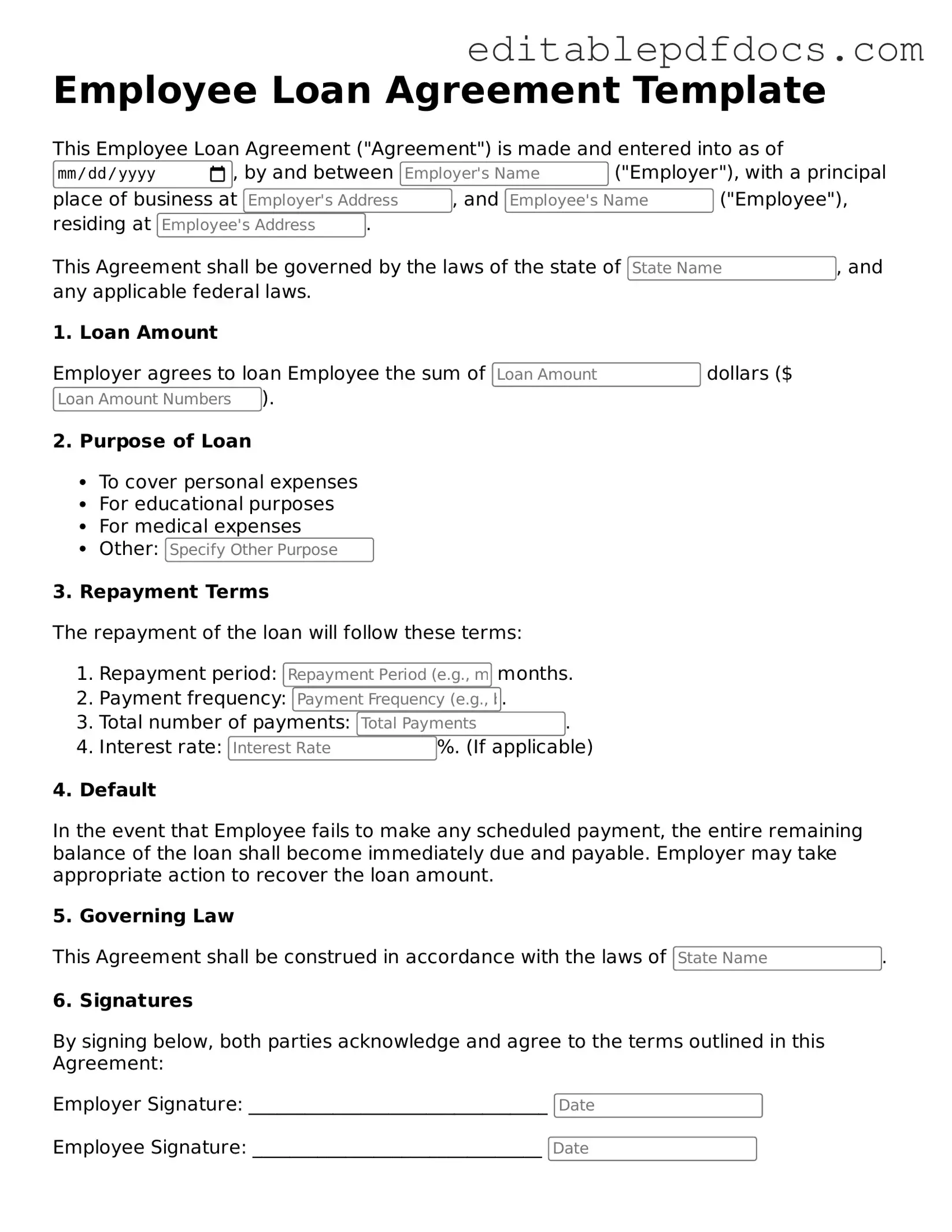Filling out an Employee Loan Agreement form can seem straightforward, but many individuals make common mistakes that can lead to complications down the road. Understanding these pitfalls can help ensure that the process runs smoothly and that all parties are protected.
One frequent error occurs when borrowers fail to provide accurate personal information. This includes not only their name and address but also their social security number and employment details. Incomplete or incorrect information can lead to delays in processing the loan and may even result in legal issues later.
Another common mistake is overlooking the loan amount. Borrowers may request a specific amount but forget to clearly state it on the form. This can create confusion and lead to disputes about the terms of the loan. It is essential to double-check that the requested amount matches what is discussed with the employer.
Additionally, people often neglect to specify the repayment terms. Without clear terms, such as the repayment schedule, interest rate, and duration of the loan, misunderstandings can arise. Both the employer and employee should have a mutual understanding of how and when payments will be made.
Some individuals also fail to read the fine print. Important details regarding penalties for late payments or what happens in case of default may be buried within the agreement. Ignoring these clauses can result in unexpected consequences, so taking the time to read and understand every part of the document is crucial.
Another mistake is not obtaining the necessary signatures. Both the employee and employer must sign the agreement to make it legally binding. Skipping this step can render the agreement void, leaving both parties without protection.
In some cases, borrowers may not keep a copy of the signed agreement. This oversight can lead to confusion later if there are discrepancies about the loan terms or repayment. It is always wise to maintain a personal copy for reference.
People also sometimes forget to include a witness or notary signature when required. Depending on company policy or state laws, having a witness can add an extra layer of validity to the agreement. Neglecting this step may weaken the enforceability of the loan agreement.
Moreover, failing to communicate with the employer about any changes in circumstances can be detrimental. If a borrower experiences financial difficulties or changes in employment status, it is essential to inform the employer as soon as possible. Open communication can help both parties navigate challenges more effectively.
Lastly, some individuals may not seek guidance when needed. If there are uncertainties about the terms or implications of the loan, consulting with a knowledgeable professional can provide clarity. Taking proactive steps can prevent misunderstandings and foster a healthier employer-employee relationship.
